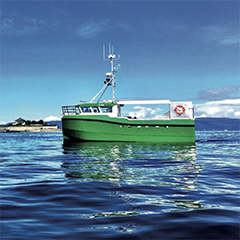The 2nd offshore wind boom is upon us and this time it is going global. During 2021 project installation will be underway in UK, Denmark, Germany, Netherlands, Belgium, France, Norway, Spain, Portugal along with US, Vietnam, Taiwan and China. By 2025 many more countries will join this rush to install the cheapest form of largescale renewable power available.
The last 10 years of this sector has been about major efficiency gains. This has been brought about by giant leaps in generating capacity, huge economies of scale and general efficiency throughout the supply chain. Turbines can now be erected and commence operation within 24hrs or less. Installed redundancy has reduced the need for regular intervention. Key failure points have been removed. All of these and many more have helped offshore wind find its place as the keystone within the generation mix for decades to come.
With this in mind, and looking to further enhance the efficiency of this green industry, one must note that the means of access to these offshore farms heavily relies upon a marine logistics fleet which currently has a hefty carbon footprint.
Whether it be the installation vessels, survey boats, cable layers, jack-ups, SOVs, CTVs or helicopters, the amount of fossil fuel used to get to an installed turbine and to service it for its 25-year life would scare many green lobbyists. 370+ CTVs using up to 2,000 litres per day is only a small part of the overall picture. But what about the gigawatts of power that these vessels help produce. Why use diesel when electricity is even more plentifully and readily available.
Well it doesn’t take a naval architect to tell you that it is harder to walk in water than it is on land. Therefore, we must accept the fact that the energy requirements to move people and their cargo by water is going to be high. Also, sadly the energy density of diesel (45MJ/KG) is still over 20 times greater than an efficient Lithium battery (2MJ/KG), despite Elon Musk’s efforts.
This might lead many to conclude that it is simply not worth doing due to the cost of batteries and the huge tonnages that would be required to replace like for like capabilities. Or one might think that the only reasonable step would be to make a headline grabbing symbolic gesture in adopting a hybrid solution to at least allow some of the fuel to be offset by battery power. I hear you saying, ‘but what about hydrogen?’, due to the fact that it can be green sourced and has an energy density even greater than diesel. But no… If we are to seek efficiencies while also moving away from fossil fuels, then we cannot allow 10 MW of electricity to be used to make hydrogen to then turn it back into electricity and only be left with about 1MW of electricity to put through a motor. That can’t be a sensible solution unless electricity is free and we are not there yet! This is especially true when considering that currently 98% of the commercially available hydrogen originates from non-renewable sources. Hydrogen clearly has its benefits due to its ability to store energy and for long haul marine transport it could be the saviour of the oceans but for near coastal and for small vessels the future is electric.
























